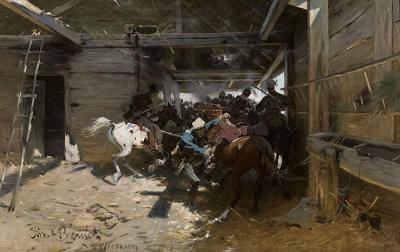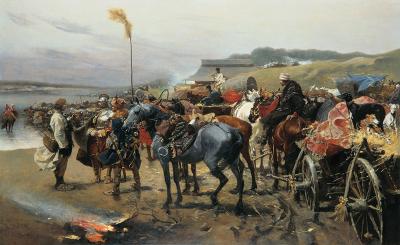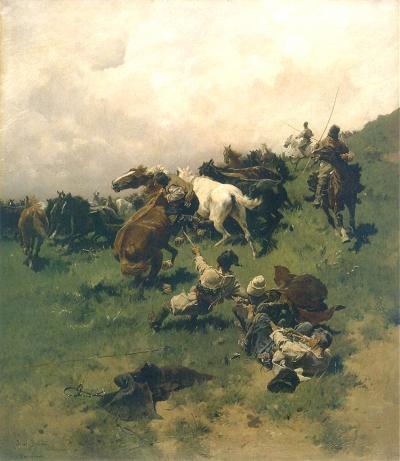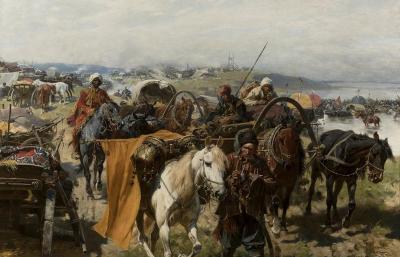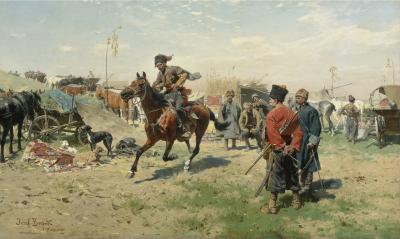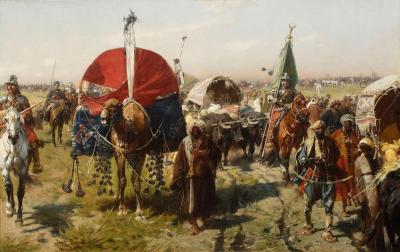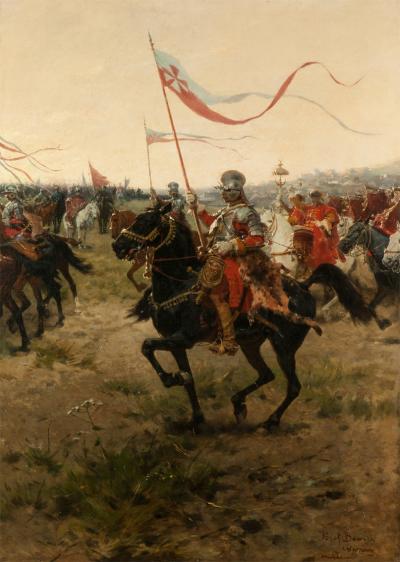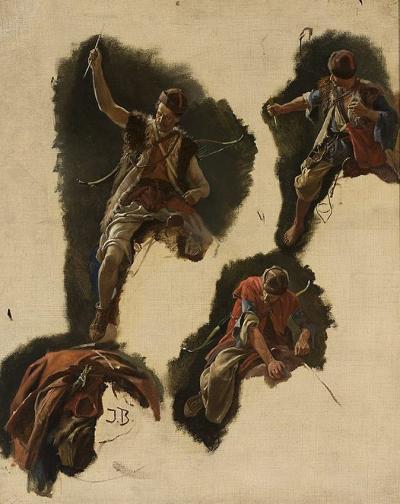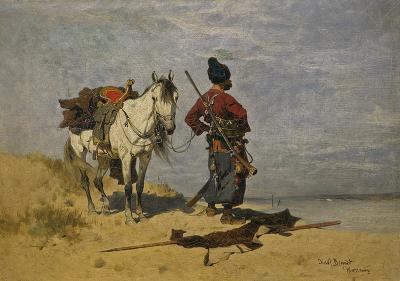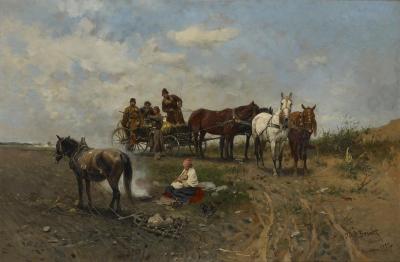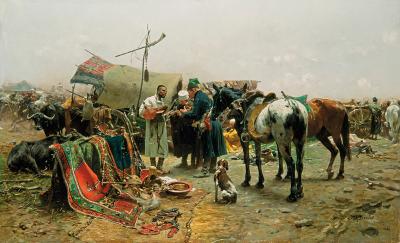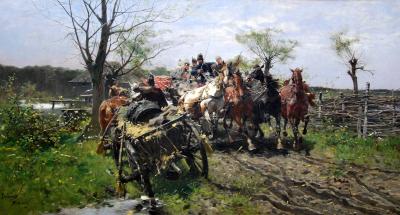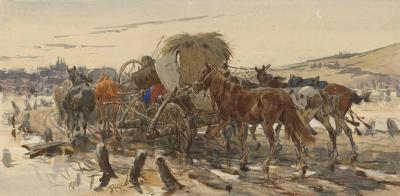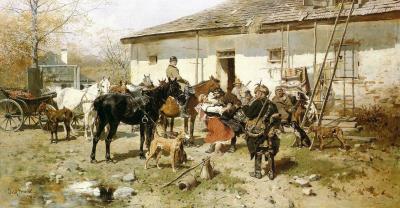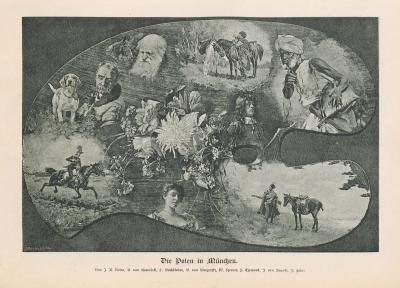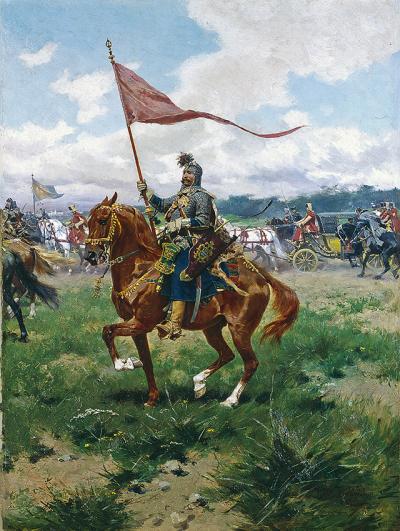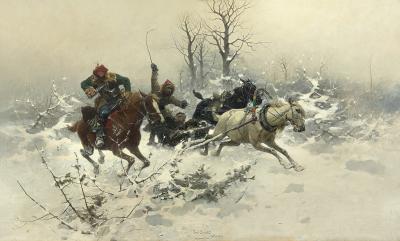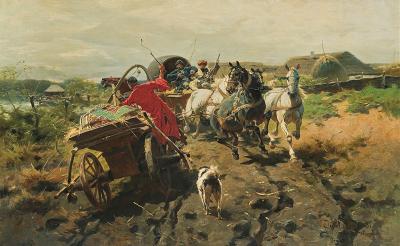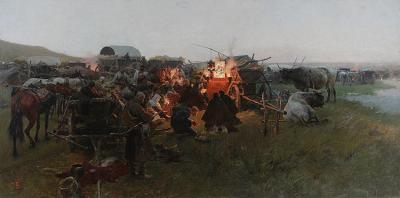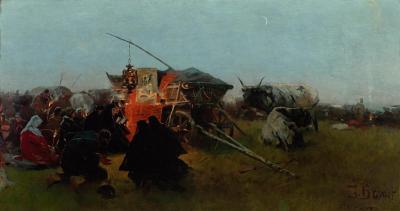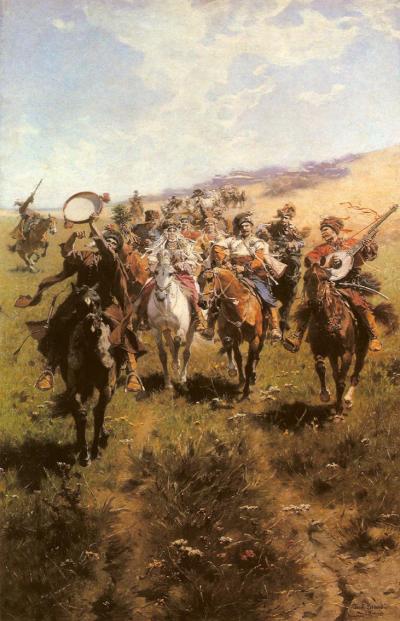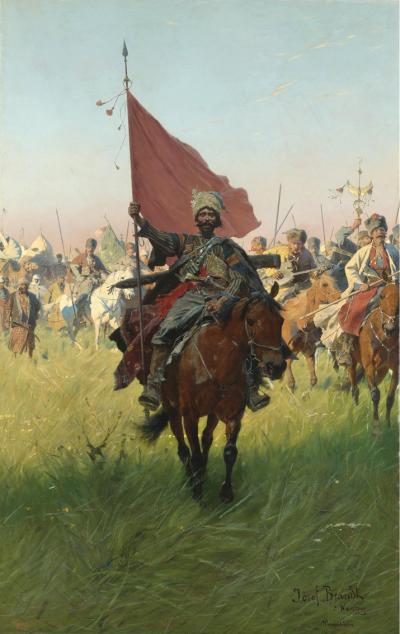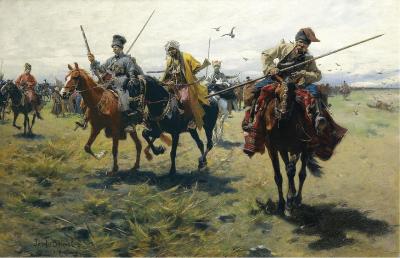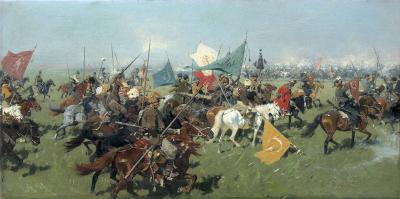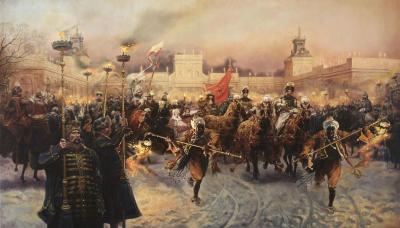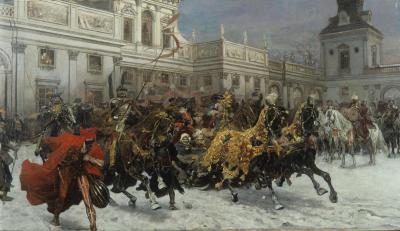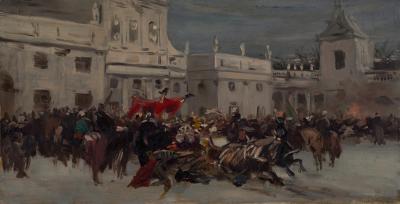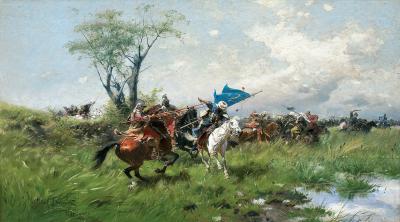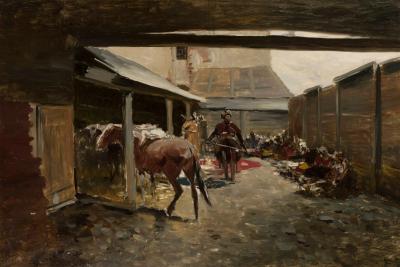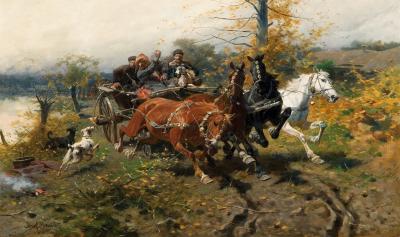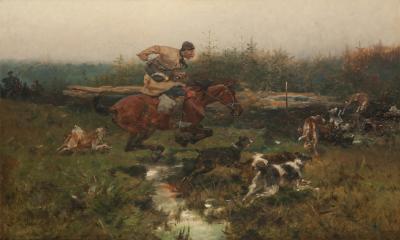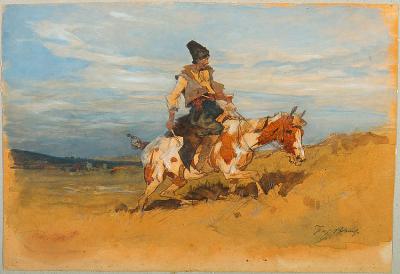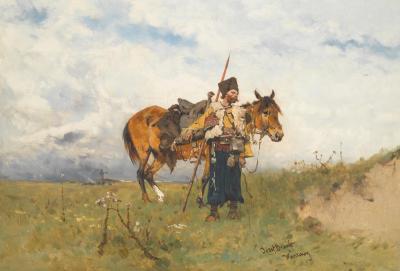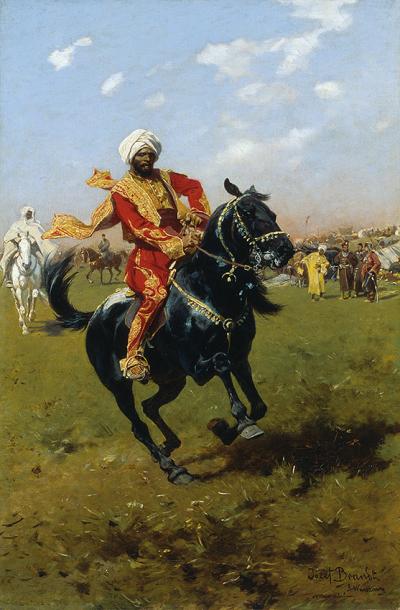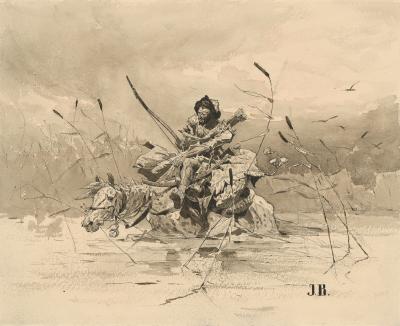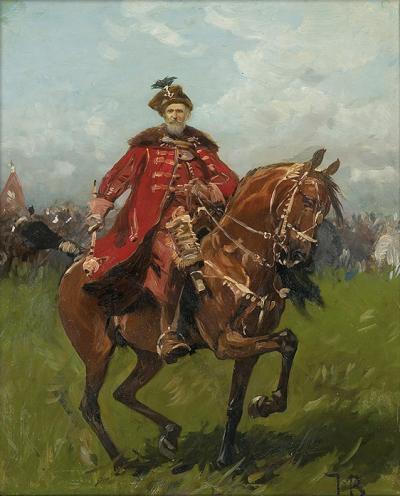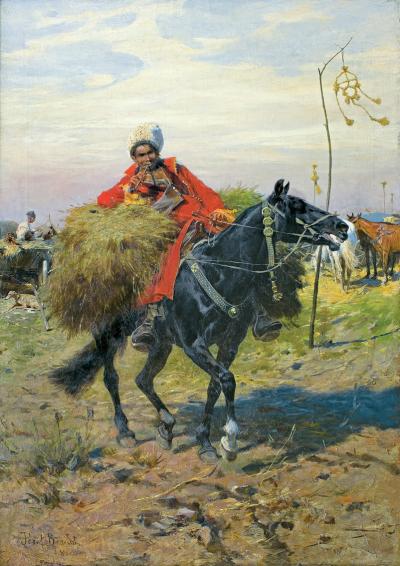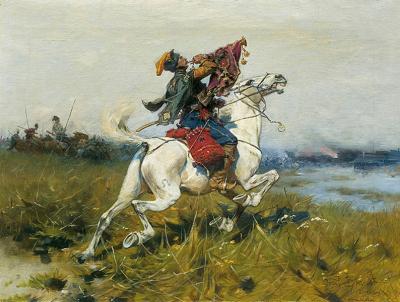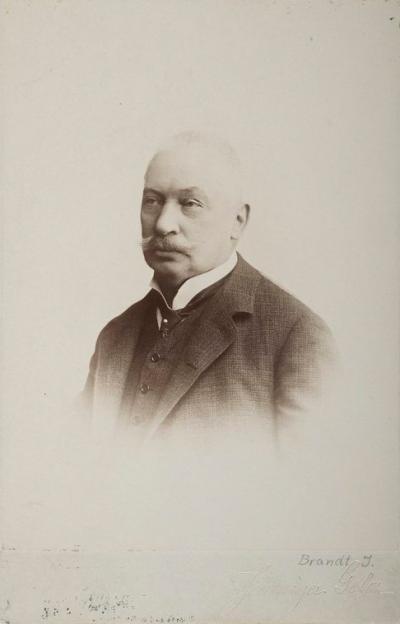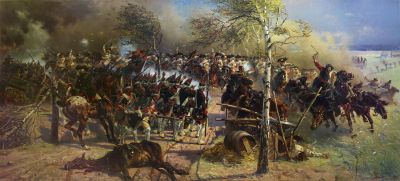Józef Brandt
Mediathek Sorted

In 1862/63 Brandt moved to Munich to study painting in the private studio of the history painter Alexander Strähuber (1814-1882), a pupil of Schnorr von Carolsfeld. On 17th February 1863 he enrolled at the Royal Academy of Fine Arts in Munich, and like most of the academy's students began his studies in the antiquity class[27], after which he studied under Carl von Piloty, who mainly painted history scenes.[28] But he also found pictures of battles and horses similar to those by Kossak, painted outside the academy by Franz Adam (1815-1886),[29] who arrived in 1860 from Italy to Munich and in whose private studio Brandt received further instruction. He also attended watercolour painting courses given by Theodor Horschelt (1829-1871), who was known for war scenes from Caucasia and Algeria.
Even at this early stage, Brandt was showing his own works in public. In 1863 he presented his painting “The March of the Lisowskis“ (Pochód Lisowczyków, fig. 6), at the Society of Friends of the Fine Arts in Krakow/Towarzystwo Przyjaciół Sztuk Pięknych w Krakowie. It received so much approval and recognition that the society's board of directors commissioned the Berlin engraver Hermann Droehmer (1820-1890) to reproduce it as an annual gift for the members. The scene shows the Lisowski Cossacks, originally recruited and trained by the Lithuanian nobleman Aleksander Lisowski (around 1580-1616) in operation during the Polish-Ottoman War of 1620-21, a subject which Brandt was to deal with in future paintings. The picture shows that he was already a virtuoso in this genre and had long since outstripped his teacher, Adam, with his concise colourfulness, skilful perspective, the vivid scene and the elegance of the horses.
He also produced genre motifs like “Jews taking their Horses to Market” (ca.1865, fig. 7) and “Polish Peasant's Horse and Carriage” (1865, fig. 8), where the composition and perspective, the characteristics of the horses and the gestures of the characters involved are similar to the previous Cossack painting.[30] Nor is this a battle painting, because the main pictorial elements, apart from its studies of animals, the picturesque costumes and carriages, are really genre motifs. Brandt's continued interest in 17th century themes, the era of the Polish wars, as well as the landscape and folk culture of the Polish border areas, can be attributed to the early influence of Kossak and their joint travels, from which Brandt certainly brought sketches to use in his paintings.
[27] Matrikeldatenbank, Matrikelbuch 2, Akademie der Bildenden Künste München, 01934 Josef Brandt, http://matrikel.adbk.de/matrikel/mb_1841-1884/jahr_1863/matrikel-01934 , Digital version: http://daten.digitale-sammlungen.de/~db/bsb00004661/images/index.html?id=00004661&fip=217.237.113.238&no=&seite=197 (called up on 16.11.2017)
[28] Carl Theodor von Piloty: Gründung der Liga durch Herzog Max I. von Bayern, 1852; Columbus, 1865; Thusnelda im Triumphzug des Germanicus, 1873, all in the Neue Pinakothek, München
[29] Franz Adam: Weißes Maultier, circa 1870/80; Vor dem Ausritt, 1871, both in the Neue Pinakothek, München; Scene from the Austrian-Italian War, 1872, Bayerische Staatsgemäldesammlungen, München
[30] The dark tones and overall yellow impression in the painting in the Munich Lenbachhaus (fig. 8) can presumably be attributed to dirt and aging varnish.

















































































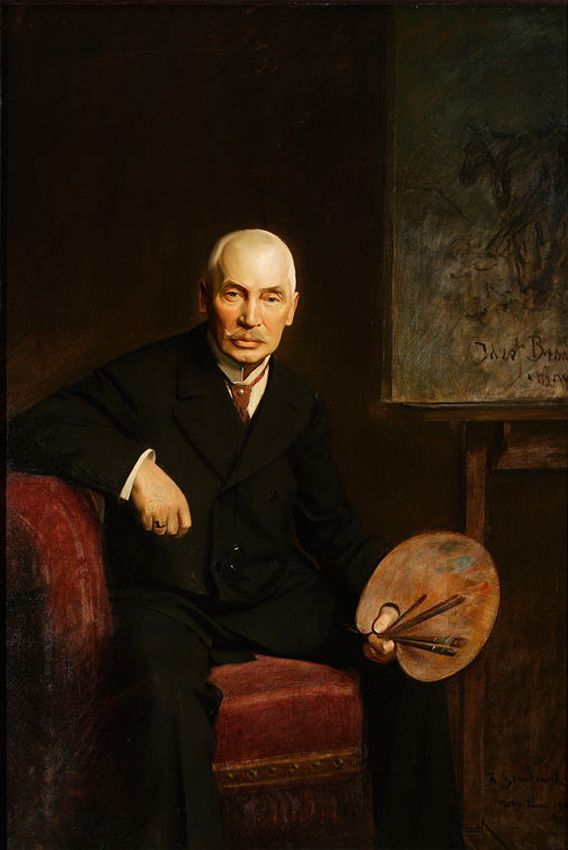
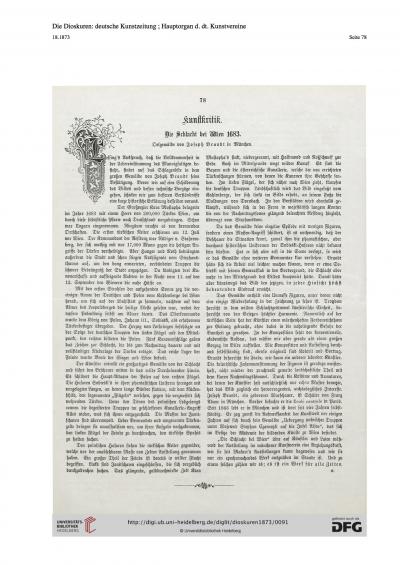
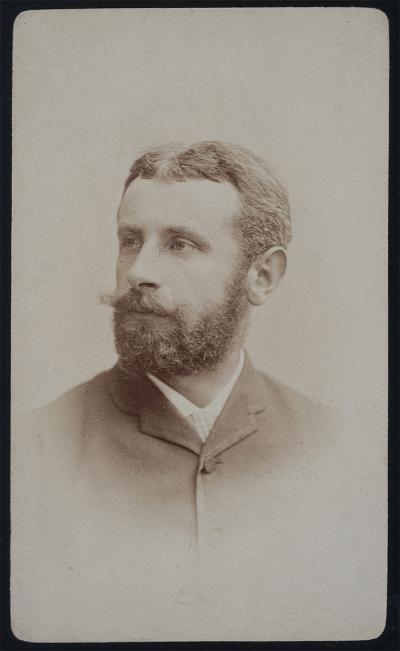
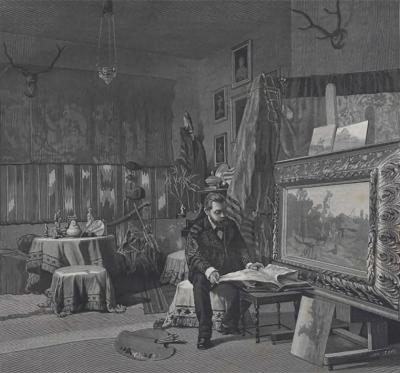
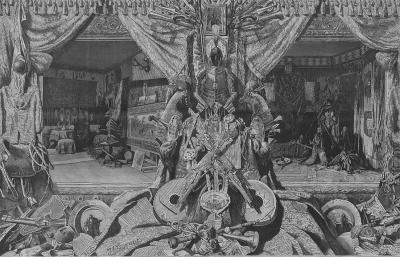
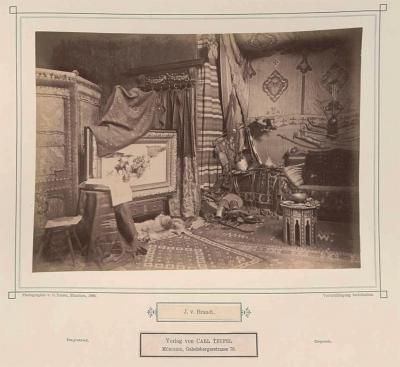
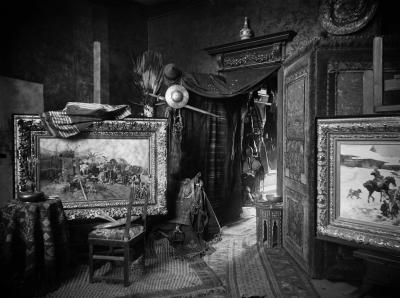
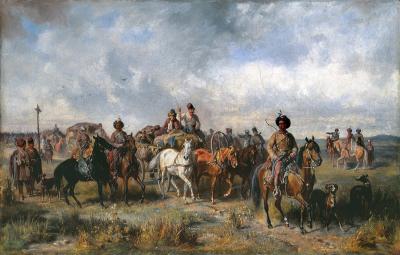
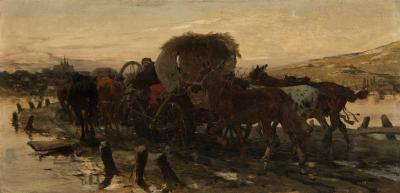
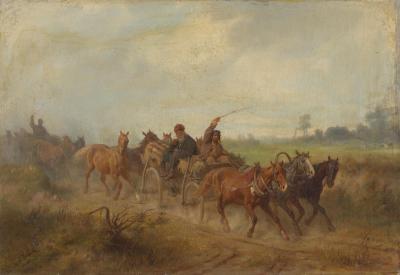
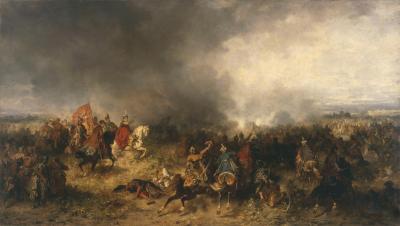
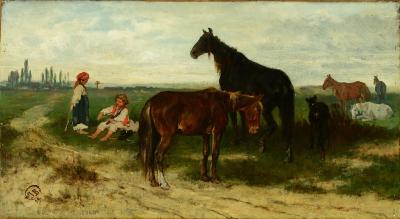
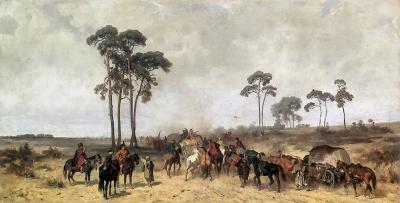
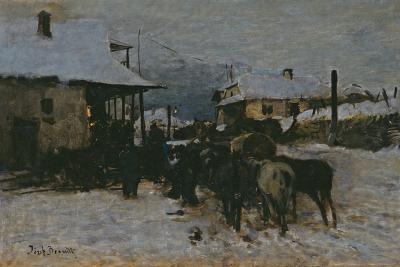
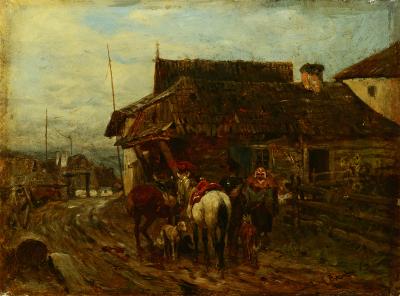
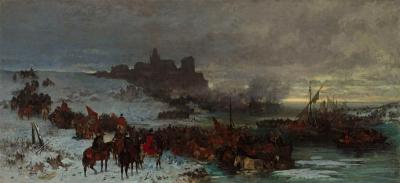
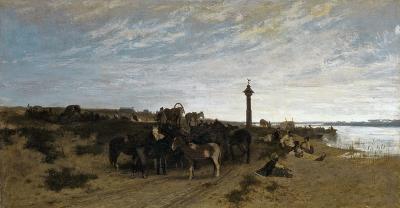
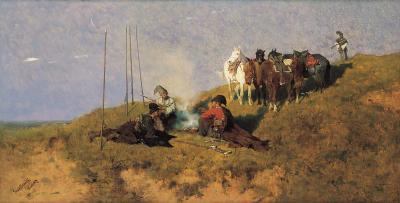
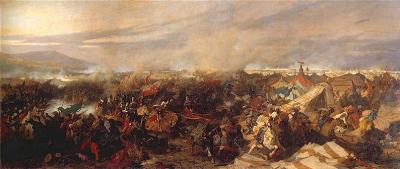
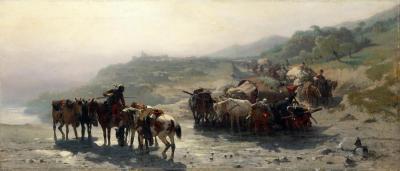
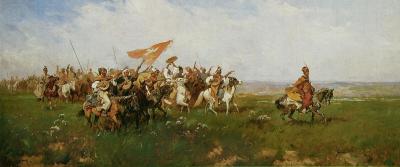
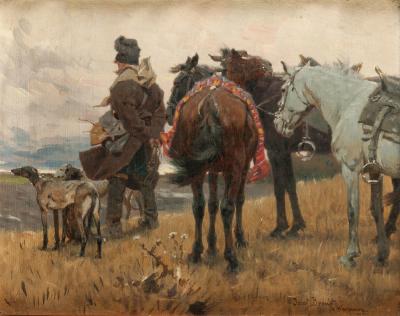
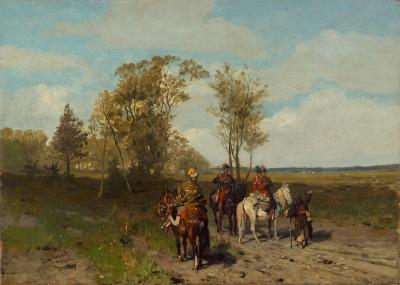
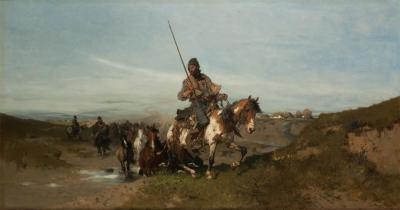
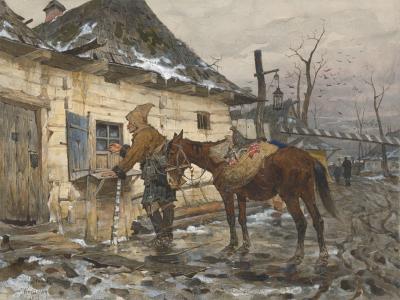
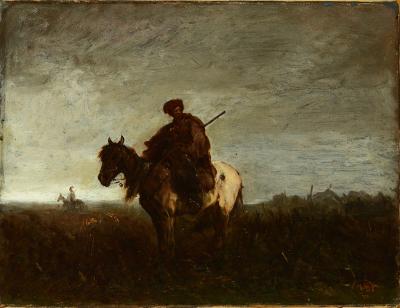
![Fig. 25: The Liberation of Prisoners, 1878 Fig. 25: The Liberation of Prisoners, 1878 - The Liberation of Prisoners [from the hands of Tatars], 1878. Oil on canvas, 179 x 445 cm, National Museum Warsaw/Muzeum Narodowe w Warszawie](/sites/default/files/styles/width_100_tiles/public/assets/images/25_befreiung_der_gefangenen_1878_mnw_cyf.jpg?itok=i5_t7XqM)
